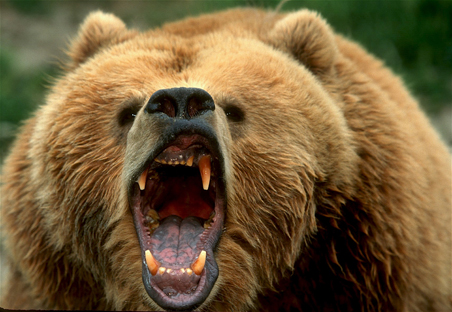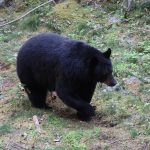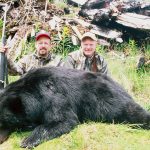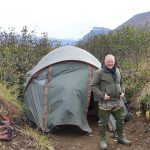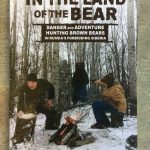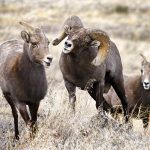Brown bears are found in many parts of the world, with the biggest in Alaska and Kamchatka. But don’t delay.
If a brown bear hunt is on your radar, don’t wait much longer. Anti-hunting political pressures recently caused bear hunting to close in such places as British Columbia and Romania, regions with strong bear populations, long established hunting traditions, and successful conservation programs. Never mind about science and sustainable use or the fact that the IUCN Red List of Threatened Species lists brown bears as a species of Least Concern. Blind emotionalism is driving this train. And it’s not good for the bears: In recent years Croatia has permitted an 8 percent harvest of its brown bears by sport hunters, while neighboring Slovenia, which does not allow sport hunting, killed 20 percent of its bears via government culls to address citizen complaints.
Arguably the largest bear species in the world, the brown bear is unarguably the most widely distributed. Forget black bears and polar bears; brown bears are the ursine dispersal champions. Starting from ancient cave bear ancestors some 800,000 years ago, brown bears evolved in central Asia and dispersed around the northern hemisphere. The fossil record indicates they moved into Europe about 250,000 years ago and spread from Ireland to the Atlas Mountains of north Africa. They fished and prowled, dug and foraged, hunted and bred from the seashores of Norway across Russia and down into Syria, India and Tibet. They padded across Siberia, through Korea, and somehow managed to populate the northern islands of Japan, probably swimming, perhaps ice skating down from Sakhalin Island before hopscotching up the Kuril Islands toward Kamchatka. From their Arctic outposts at the northeast tip of Russia, they could gaze across to Alaska on a clear day. They must have liked what they saw because they crossed over perhaps 100,000 years ago, then spread east to Hudson Bay. After the last glacial retreat roughly 13,000 years ago, they pioneered south down the Rockies, Cascades, and Sierras into Mexico and east into the Great Plains, where Lewis and Clark first encountered them.
Not surprisingly, given their size and proclivity for anything edible—including grain, garden vegetables, cattle, lambs, and the shepherds that guard them—brown bears have been harassed and killed by us puny humans throughout history. And vice versa. Probably more vice versa. Until firearms became powerful and reliable enough to stop raging 300- to 1,500-pound bruins, we mostly avoided the big bears. Nonetheless, our ancestors managed to wipe the monsters from Britain by 1,000 AD. Nature herself, via a thick sheet of ice, probably froze them out of Ireland during the last glacial advance. More recently we cleared them from North Africa by 1890, from California by 1922, and across most of western Europe outside of the larger mountain ranges.
Less surprising than where these apex predators have been extirpated is where they have not been. Despite intense eradication efforts in the nineteenth and early twentieth centuries, brown bears persist in parts of Spain, France, and Italy. They continue through Scandinavia and the Caucasus and hang on in Turkey, Iran, India, and Japan. They still roam the mountains and forests of western Europe. Romania alone supports an estimated 6,000 Eurasian brown bears. Worldwide their population numbers 200,000 if you count all subspecies such as North America’s interior grizzly. And that makes a hunter’s heart sing. If there’s anything a sport hunter loves more than hunting it’s the healthy and continuing productivity of wildlife in wild places.
Finding a place to hunt brown bears is surprisingly easy. A quick online search uncovered ten options in Alaska, Russia, and Estonia. The most popular destinations for brown bear hunting are Alaska and Russia, especially Kodiak Island and the Kamchatka peninsula, destinations widely known for growing the biggest bears on the planet.
The world-record North American brown bear was taken on Kodiak Island in 1952. Its skull measured 30 12/16 B&C points. The world record Kamchatka brown bear, taken in 2013, scored 30 11/16 SCI points. Body sizes for these and related Kodiak and Kamchatka beasts have been estimated and exaggerated for years, but reasonably verifiable top weights come in around 1,500 pounds. Nose to tail lengths prior to skinning might break 10 feet, possibly 11, but tales of 13-footers abound. You are welcome to believe what you wish. Most hunters find the sheer mass of a 10-foot bear more than sufficient for awe.
For a size comparison, the SCI record Romanian brown bear is listed at 26 10/16, fully 4 inches smaller than the Big Two. The biggest Romanian bear by weight reportedly went 1,058 pounds.
Almost all of Alaska’s record- book browns come from Kodiak Island and the nearby Alaska Peninsula. Russia’s Kamchatka bears also roam the coasts of the Okhostk Sea, including Sakhalin Island just north of Japan. These are the regions to hunt if you’re looking for the biggest bears, and if that doesn’t sound fishy to you, it should.
These two locations produce the world’s largest brown bears because of their pipeline to the sea—a salmon pipeline. The volcanic mountains of both regions, part of the Pacific Rim of Fire, create snowpack reservoirs that feed thousands of runoff streams. Hundreds of millions of salmon swim, spawn, and die here every year, many of them in the jaws of hungry bears. These are the best fed bears in the world, and they use a minimum of energy to earn that privilege. If they live long enough, they grow huge.
The size and abundance of these bears—plus the wild, unspoiled wilderness in which they live—attracts intense hunter interest. This leads to high prices and limited opportunities. Alaska’s best big bear hunting units can be hunted by limited entry tag only and then but once every four years. Kamchatka hunts are less tightly limited, but slightly more challenging and expensive to reach. All of this creates what some consider even better and less expensive brown bear hunting opportunities elsewhere.
Much of coastal Alaska from Ketchikan north and west around the state has abundant brown bears. They’re big, but not record-book big, so they are less expensive to hunt and tags are more readily available. In some units you can buy a tag every year. Guide/outfitter fees run from $8,000 up to $16,000. Compare this to coveted Kodiak and AK peninsula hunts running from $20,000 and up.
Some Russian brown bear hunts northeast of Moscow in the Kirov region are being advertised at $72 per day for room, board, and guiding plus a trophy fee from $1,000 to $1,900. These can be spring or fall hunts, usually conducted over oat fields or bait from blinds, but some spot-and-stalk hunts are possible. Hunts in Russia’s Lake Baikal region north of Mongolia are running at daily rates of $188 plus $2,000 if you take a bear. Gun import fees, flights, Visas, CITES permits and bribes/tips always add expense, but Russian guides have always proven welcoming, effective, and fun, in my experience.
I’ve seen Swedish brown bear hunts advertised for $10,000 Krona, which is about $1,260 US as this is written. Finland hunts are advertised at $3,659 US. Tags are strictly limited in both countries. The Swedes, by the way, often hunt with dogs. Something different.
Success rates always vary by region and outfitter. Alaska harvests have been ranging from 0 to 50 percent depending on unit, but that includes do-it-yourself resident hunts. The overall average is about 25 percent. One outfitter who has been setting up Russian bear hunts for more than two decades claims his clients enjoy success rates close to 100 percent. Do your own research, but if you want to indulge in a hunt for the largest land predator on Earth, get going. The anti-hunting movement isn’t getting any weaker.

